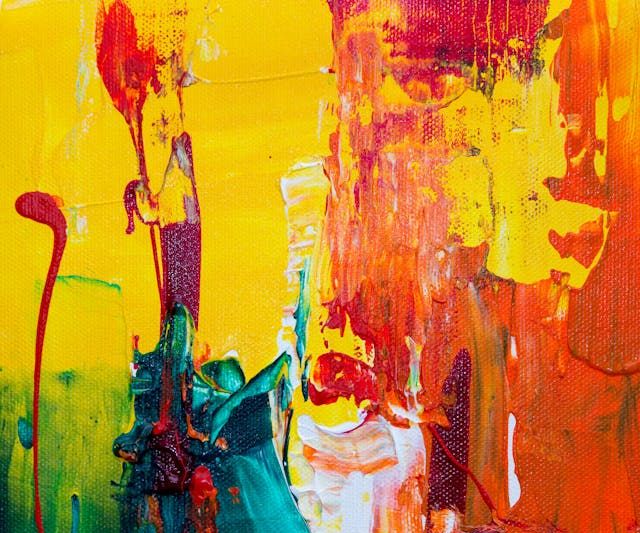The role of design unity, fundamentally integral to the creation of visually appealing and coherent design results, cannot be overstated. Its essence is a mirror reflecting the degree to which elements in a design project align harmoniously, forming a sturdy bridge that connects diverse components into an overall cohesive canvas. To put it more plainly, its function is pivotal in promoting seamless visual fluidity where every piece appears interconnected and creates an all-encompassing aesthetic effect on viewers’ perception.
Delving deeper into its core significance – how well design elements coalesce exhibits the proficiency of a designer to skillfully manipulate various facets like color schemes, texture variations, alignment patterns, repetition strategies, scale proportions, form structures and proximity principles. The goal? To achieve an equilibrium that resonates harmony throughout the entire composition. The triumphant execution of this concept largely relies upon meticulous selection and strategic positioning of these elements so as to manifest as one visually balanced entity where no component feels misplaced or arbitrarily incorporated.
In conclusion, gaining insights about design unity propels one towards mastering effective visual communication by broadcasting messages devoid of ambiguity or confusion straightway to viewers.
Delving into the Role of Color in Design Unity

In the realm of design, color reigns supreme, its dominance unchallenged in orchestrating unity. It wields an uncanny power to steer a viewer’s perception and elicit psychological responses towards design elements. Color itself is a silent orator, speaking volumes through visual cues – setting the mood, highlighting focus areas, crafting a visual pecking order. An artist’s strategic selection of hues and their consistent application across designs weave together scattered fragments into an aesthetic whole. This harmony births from meticulous color-play answers the enigma- ‘how do the elements of a design show unity quizlet?’
The spectrum paints not just with emotions but also manipulates how heavy or light we perceive an object to be. Shades that lurk in shadows appear heavier than those basking in sunlight; thereby holding more gravitational sway on our gaze. A skilled use of colors can thus balance this visual weightage and guide our eyes along a seamless journey through the canvas of design. Profound understanding coupled with thoughtful exploitation of these characteristics can help strike up unique rhythms or contrasts or themes – all contributing towards forming one unified masterpiece under the deft strokes of color.
Exploring Textures and Patterns: The Silent Contributors towards Unity in Design
In the realm of design, unity is often a cryptic puzzle that hinges significantly upon the methodologies employed and instruments harnessed in its creation. The unsung heroes contributing to this mysterious harmony are texture and patterns, frequently unnoticed yet invaluable components.
These integral constituents weave an invisible thread running through the fabric of any composition, bestowing it with a sense of completeness. They act as unifying agents, linking disparate elements into one coherent entity. This happens even when individual fragments appear incongruous or misaligned on the surface causing one to ponder: how can these disjointed pieces come together as an embodiment of unity?
Herein lies the enigmatic nature of textures – they define how we perceive an object’s surface; rough or smooth; hard or soft. Patterns play a different role altogether- they echo visual motifs repeatedly across space. When used tactfully, these two techniques make for powerful tools capable of threading divergent elements together.
They create not just visual interest but also add layers to design depth making it more engaging and stimulating for perception. So when confronted with designs where some parts seem off-kilter compared to others, fret not! A wise application of textures and patterns can adroitly pull together all those loose ends forging them into unified wholesomeness despite their seeming imbalance thus delivering an overall visually harmonious experience.
Alignment and Proximity in Design: Building Visual Connections
In the grand tapestry of design, alignment is often misconstrued as a minor thread. Yet, it is this underappreciated aspect that quietly weaves visual links, instills unity and shapes the overall aesthetic character of any creation. It brings lucidity and coherence to disparate elements of design by marshalling them into an orchestrated arrangement that exudes order, equilibrium, and harmony. By cleverly placing objects in symmetrical lines or encircling them around a particular element, designers can miraculously improve readability; they can create focal points while gently directing the viewer’s eye towards pivotal aspects.
Proximity too whispers its own subtle language: crafting bonds between elements through silent communication. This overlooked cornerstone of design clusters like-minded items together—thus decluttering chaos and enhancing understanding. Designers who position interconnected elements within close quarters are master craftsmen—they silently suggest association or resemblance among these pieces creating an unspoken narrative link in the observer’s psyche. When applied judiciously, proximity amplifies cohesion throughout the entirety of a composition making it appear more orderly—a feast for eyes indeed!
Thus alignment with its straight-lined precision combines with proximity’s associative nature resulting in a harmonious dance: spinning strong visual threads which captivate viewers’ attention thoroughly yet delicately.
Alignment and proximity are two essential principles of design that serve as the backbone for creating visually appealing compositions. They play a crucial role in establishing visual connections, maintaining balance, and enhancing readability.
- Alignment:
- It provides structure to designs by arranging elements into an orderly pattern.
- It enhances clarity and coherence by connecting disparate parts of a design.
- By placing objects in symmetrical lines or around a focal point, designers can guide viewers’ attention towards key aspects.
- Proper alignment facilitates better readability and understanding.
- Proximity:
- It groups similar items together thus reducing clutter and confusion.
- Designers using proximity effectively can subtly suggest relationships among different elements without explicitly stating them.
- When used wisely, it promotes cohesion throughout the composition making it more organized and pleasing to the eye.
By combining these two principles—alignment with its precision-based approach, and proximity with its associative nature—a harmonious interplay is achieved. This not only captures viewers’ attention but also makes their viewing experience enjoyable. In essence, these unassuming yet powerful tools help weave compelling narratives through design while ensuring aesthetic harmony.
Repetition and Consistency: The Key to Harmonious Design
Under the prism of design, the act of repetition emerges as a potent instrument to forge visual uniformity while cultivating an ambiance of familiarity amongst viewers. As elements like shades, forms or tactile surfaces echo through a design, they innately summon a feeling of connectivity between disparate parts, paving the way for an accordant design. This intricate tapestry woven from recurrent elements ties together the essence of the design, ensuring that viewer attention is ensnared and smoothly navigated across its expanse. It engenders a rhythmic equilibrium while underscoring the principal communication intent.
Simultaneously, consistency – repetition’s close relative – holds steadfast in preserving unity within designs. Consistency implies homogeneous implementation of aspects such as typography styles, iconography and visuals which bolster cohesion within any given piece. A steadfastly consistent design subliminally educates a viewer about patterned aesthetics leaning on their inherent capacity to discern and react to established visual norms. Henceforth, skilful deployment of these two allies – repetition and consistency – assists in crafting an overarching language for designs that are cohesive yet engaging; impactful without compromising integrity.
The Influence of Scale and Proportion on Design Unity
In the realm of design, scale and proportion emerge as pivotal cornerstones that render unity. They serve as invaluable contributors in shaping a visually symmetrical and balanced composition. Scale, keenly observed, narrates the narrative of sizes – an elemental comparison relative to each other and within the larger context of the design itself. It influences how a viewer perceives and experiences a design.
When artfully manipulated, scale imparts depth to designs while generating illusions of space, thereby fabricating captivating dynamics within the overall assembly.
Proportion plays its part too; it dwells primarily on relationships between sizes among distinct elements whilst establishing clear visual benchmarks for representation. Attaining agreeable proportions can stir feelings akin to comfort or familiarity within observers, fostering cohesion across the design’s expanse.
A meticulous focus on scale and proportion enhances unity in designs by facilitating seamless amalgamation of disparate elements. By deftly employing these tools at one’s disposal, designers can instill balance into their work while laying down an impacting visual hierarchy — yielding unified creations that captivate viewers’ attention.
Shape and Form: Their Impact on Unified Design
Intricate and profound is the influence of shape and form in crafting unity within design. Each component, integral to the formation of aesthetics, injects significant value into the perceived wholeness of a design piece. It’s indisputable that these rudimentary elements lay down foundations for cohesiveness and symmetry within physical boundaries of design, consequently steering our sensory perceptions. To distil it down – shape and form act as keystones for unifying designs, offering a fundamental framework enabling seamless visual progression.
Distinct shapes and forms disseminate unique signals which can dramatically intensify the psychological resonance of a design. Harmonizing them in an orderly fashion births a visual dialect that transmits the intended message efficiently, potentially guiding viewer sentiments and responses. More crucially though, meticulous organization of shapes and forms ushers in rhythm and equilibrium; knitting diverse elements into an harmonious entity. Undeclared but evident is that strategic application of shape & form largely seals the fate for success when it comes to unified designs.
FAQs
The term ‘design unity’ is indicative of a principle where various elements within a design interact in unison to formulate an integrated and coherent entity. It suggests an overarching uniformity, coherence, and congruity amongst diverse components of the design.
Color assumes a vital part in enhancing design unity by establishing an optical correlation among distinct elements. Consistent application of a particular color palette can facilitate generating a balanced harmony, endowing the overall design with increased cohesion and integrity.
Textures and patterns subtly enhance design unity by infusing depth and visual intrigue. When certain textures or patterns recur throughout the layout, they foster cohesion which subsequently engenders an atmosphere of harmony and integration.
Alignment pertains to how well individual elements correspond with each other inside a given layout. Elements that align form more robust cohesive entities. Proximity conversely relates to arranging components near one another; this visual interlinking aids grouping alike constituents together thereby fostering integral symmetry.
Repetition coupled with consistency forms basic tactics for crafting unified designs. Replication strengthens specific aspects making them easily identifiable while also ensuring consistent presentation across all parts of the ensemble piece. Ensuring homogeneity ensures similar facets share common styles & attributes thus contributing towards creating pleasingly congruent designs.
The concepts concerning scale plus proportion deal with comparisons between different sized-design features relative to each other; these factors fashion visual equilibrium, hierarchy as well as interest hence they play a significant role in the overall unity of design.
Shape along with form are fundamental constituents within design. They generate interest, lend depth, plus highlight important components. When strategically utilized, these aspects can contribute substantially towards creating unified designs by establishing a regular visual vernacular which culminates into collective congruity and harmony.




